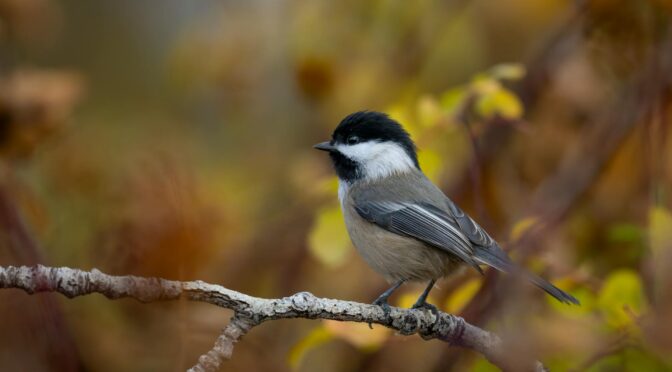You’ve probably seen social media posts asking gardeners to avoid raking leaves or tidying their gardens to protect beneficial insects, and they are true. Removing plant material can destroy the shelter and food sources for many of our garden visitors, but it’s also important to strike a balance. Tidying can help reduce disease issues and prepare your garden for next spring. Here’s how you can give your garden a fall tidy while still protecting songbirds, pollinators, fireflies, and other wildlife.
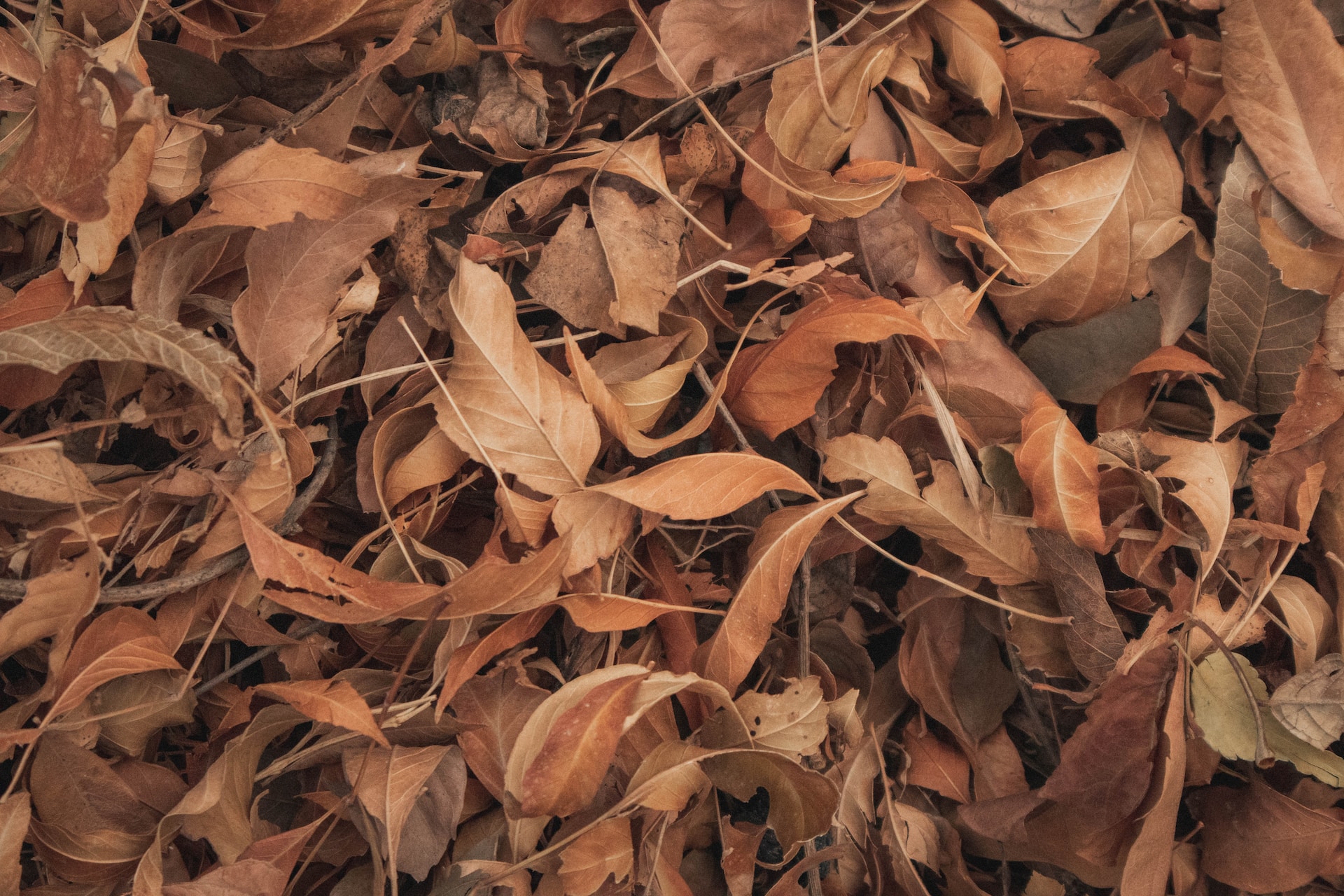
Leave the Leaves
You’ve probably heard it, and it is important. Fall leaves are a key habitat for beneficial insects and add organic matter to the soil as they break down.
If you want to remove the leaves from your lawn, consider just moving them into the garden, around perennials, or on garden pathways. There they can still provide some habitat and act as a mulch. They’ll protect beneficial insects in the garden, insulate the soil, and add nutrients and organic matter to the soil as they slowly decay.
Leaves also make excellent additions to the compost pile.
Reduce Your Mowing
Leaving your grass a little long in the fall can also help wildlife. The pupae of some fireflies, butterflies, and moths will overwinter in the soil beneath a nice thick thatch of long grass. If you want fireflies to light up the lawn next spring, leave it long this fall!
You can discontinue mowing a bit early or set the mower to its highest setting for the final cut. It’s good for your lawn too! Leaving grass a bit longer helps protect the soil and can create a healthier, lusher lawn next season. 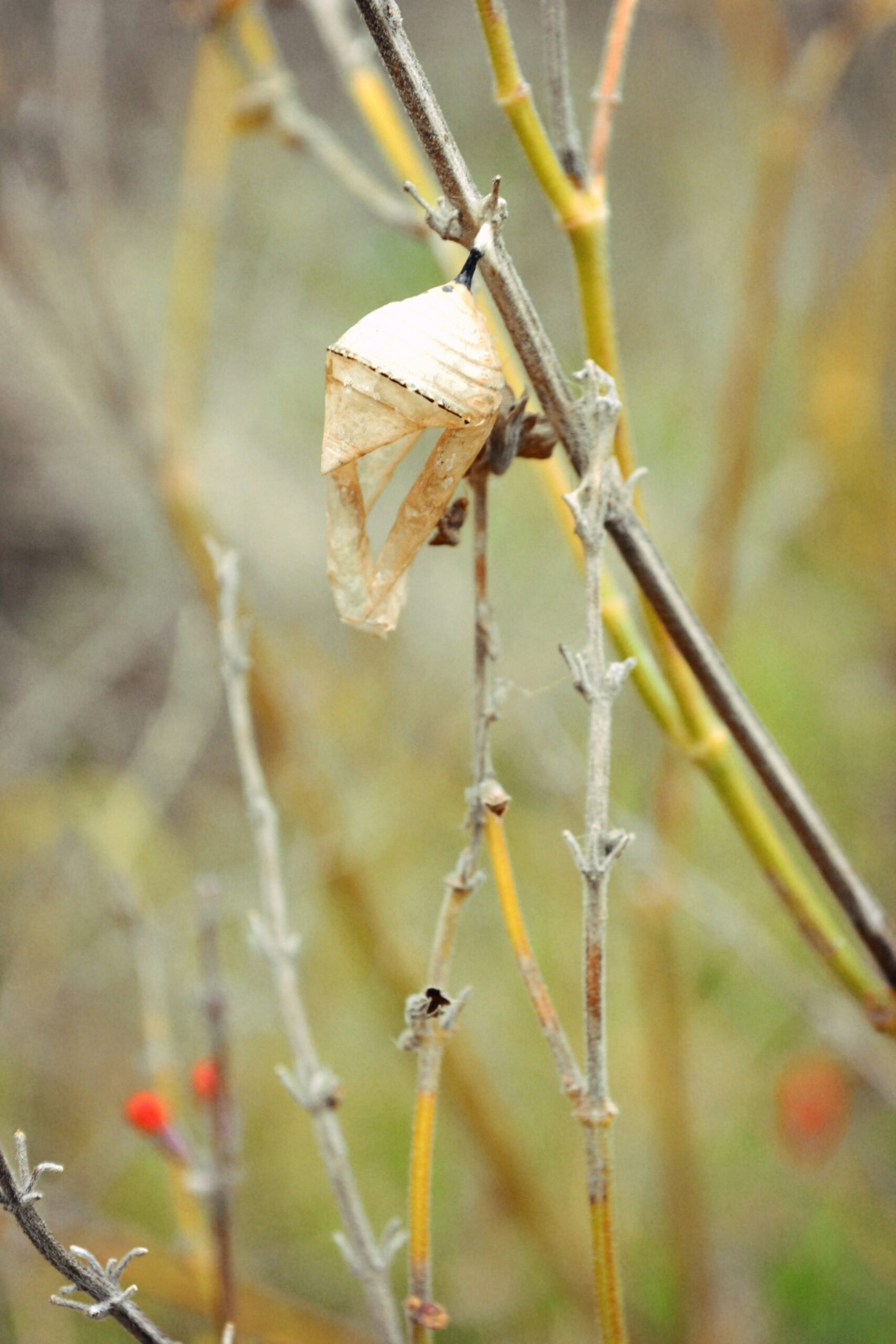
Leave Flower Stems
It may not look tidy, but dead stalks bring their own beauty to the winter garden. Flowers like sunflowers, Joe-Pye weed, goldenrod, tithonia, rudbeckia (black-eyed Susans), and marigolds will all attract seed-eating songbirds to your winter garden. Leaving the stalks will also help them self-sow and spread. Songbirds are messy eaters! They will drop some seeds as they eat and spread others through their droppings. Think of it as low-effort seed-bombing.
The stalks also provide a winter safe-haven for pollinators and other beneficial insects. Butterflies may pupate hanging from dense clumps of plant material. Small native bees like leaf-cutter bees, mason bees, and carpenter bees will also overwinter in hollow flower stems.
However, not all perennial flowers thrive without cutting back. If you notice pest or disease issues throughout the summer or have flowers like peonies, bearded irises, or bee balm that are prone to fungal issues like powdery mildew, you should still trim them in the autumn. 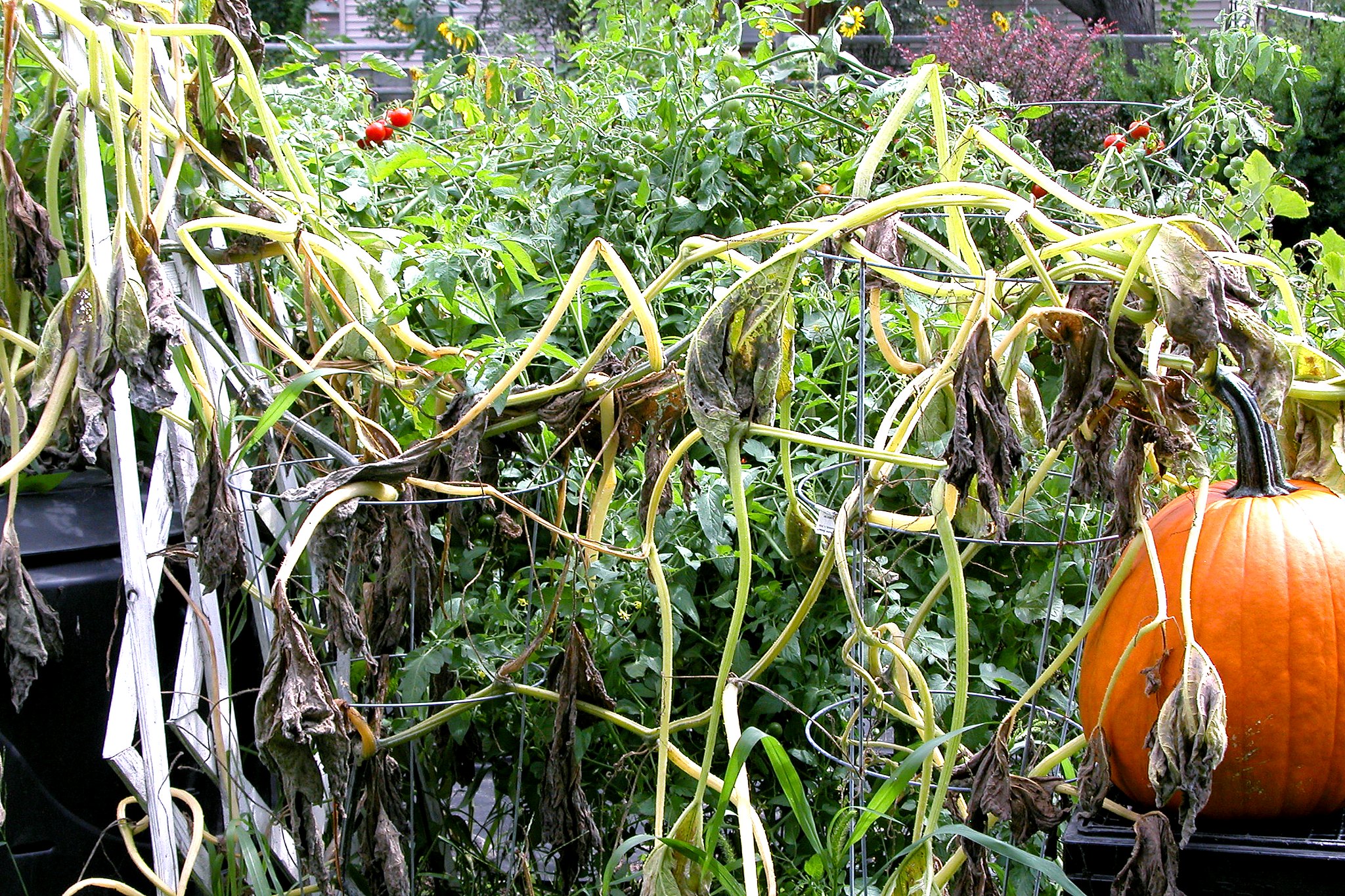
Remove Vegetable Crop Material
We also recommend that you remove all vegetable crop material. Old squash and cucumber vines can harbor diseases like powdery mildew, tomatoes carry diseases like late blight, and asparagus stalks can harbor asparagus beetles. We like to burn any diseased or pest-ridden vegetable material before winter to help mitigate these issues.
Doing a final round of weeding can also help you get a head start on spring. Many cool-weather weeds germinate in the fall, stay small all winter, and then take off in the spring right when you’re trying to get crops into the ground.
Sow Cover Crops or Add Mulch
Don’t leave your soil bare. After removing vegetable crops and weeds, you want to place a protective covering over the soil for winter. This will insulate the soil, protect against erosion, and provide critical habitat for beneficial insects and fungi.
Fall-planted cover crops are great for this. You can sow nitrogen fixers like clover and Austrian winter peas, daikon radishes to help bust hardpan and loosen the soil, or winter wheat or rye to help build up organic matter.
If you don’t have the time or energy to plant a cover crop, mulch is a suitable alternative. You can cover the soil with leaves, grass clippings, straw, wood chips, or other natural materials that will break down over the winter. 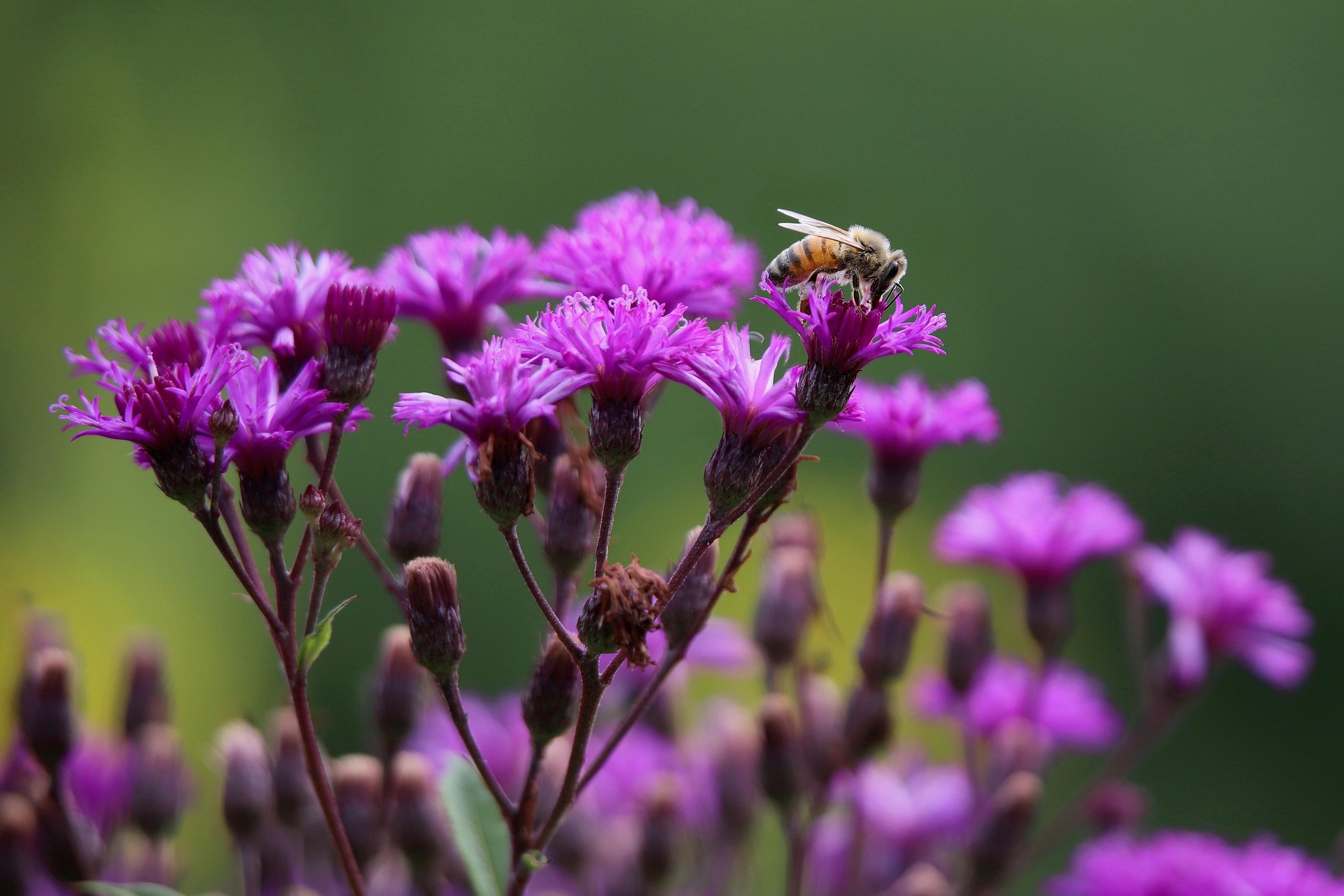
Fall Plant Native Flowers & Perennials
Once you have a tidy garden, you can also do some fall planting for wildlife. We carry a few flowers suitable for fall planting.
One of our favorite native plant and seed organizations, Prairie Moon Nursery, offers a wide selection of native plants for fall planting that ship in September and October, like wild leeks (ramps), rose milkweed, false indigo, Culver’s root, and common ironweed that are perfect for attracting and supporting wildlife. They also offer native seeds and seed mixes depending on your needs.
You can also fall plant native trees and shrubs. The Arbor Day Foundation is a great place to get affordable native species like eastern redbud, eastern red cedar, hackberry, and American elder.
Growing a mix of native plants that offer a range of heights, textures, fruit, flowers, and growth styles will provide habitat for songbirds, pollinators, and other wildlife for years to come.

